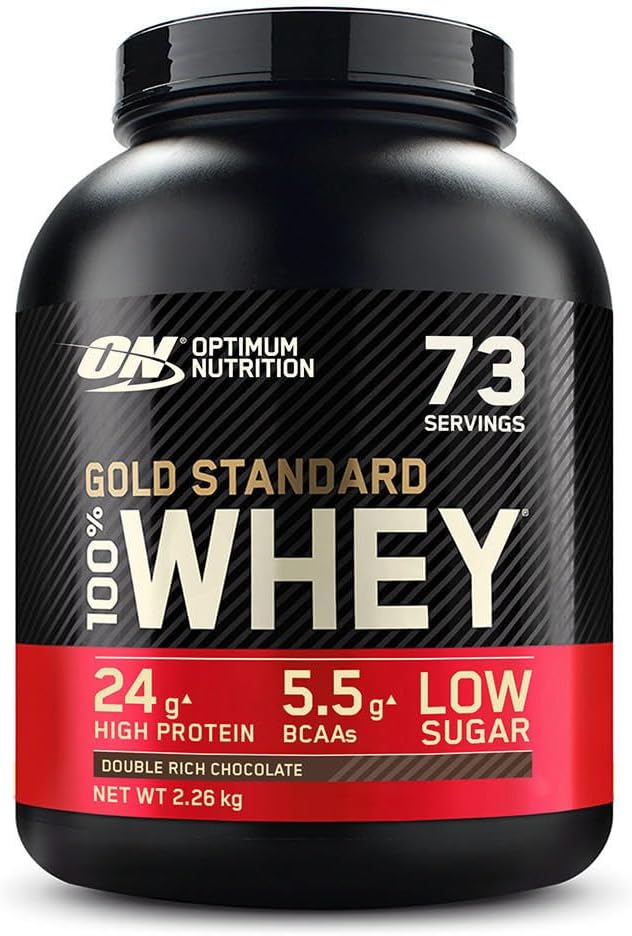The Science Behind Hypertrophy: Develop A Deeper Understanding!
What Is Hypertrophy?
Muscular Hypertrophy is the increase and growth of muscle cells. Muscle hypertrophy occurs as a result from stimulus or muscle damage particularly when working out.
Let me break it down for you so you get a deeper understanding; Hypertrophy starts with stimulus from resistance training, during which it puts mechanical stress on the muscle fibers causing microscopic tears. The body sees the tears and signals itself to start the repair and adaptation process.
Satellite Cells and Muscle Repair
It then starts an inflammatory process that is crucial for cleaning up cellular debris before new muscles form which can attract satellite cells. Satellite cells are a type of stem cell that gets activated in response to muscle damage. These cells fuse with existing muscle fibers to contribute to the repair process. To rebuild muscle fibers the body increases protein synthesis which involve the assembly of myosin and actin. during this time adequate nutrient availability is recommended especially amino acids and high quality proteins. After the recovery process Hypertrophy occurs and that’s when you prepare to do it again repetitively until you reach your goal.
Not My Video
Hypertrophy can be broken down into myofibrillar hypertrophy, and sarcoplasmic hypertrophy. Myofibrillar hypertrophy is what people train for if they’re training for strength (denser myofibrils). Sarcoplasmic hypertrophy is what people train for when training for size (larger myofibrils). Typically people train for myofibrillar hypertrophy because it trains fast twitch fibers especially well as apposed to sarcoplasmic hypertrophy training slow twitch fibers.
Myofibrillar Hypertrophy
Myofibrillar hypertrophy is the specific type of muscle growth characterized by an increase in the size and density of myofibrils within muscle fibers. The denser the myofibrils are with actin and myosin the stronger they will be. People who train for myofibrillar hypertrophy are often smaller, denser, faster and stronger, because of the training methods they put to use.
It is best to train for myofibrillar hypertrophy when strength training. The best way to train when working for this is to train with a heavier load than you could normally do in order to cause micro trauma and tears to the muscle fibers. People tend to stick to the 3-8 rep range and a longer rest time.
When training with a heavier load you MUST warmup, and do less sets to reduce injury chance. It is common for people to rest longer in between sets because it requires so much effort to move so much weight. When training for myofibrillar hypertrophy the key is to lift as much weight in 1 set as possible. Lets say you’re bench pressing and you can do 185 for 5 reps max, but only 225 for 2. If you want to make more progress than the other people you would lift a more total weight per set, so you would do 185 for 5 not 225 for 2. The key part that gets people is not maxing out every day, and just work for your strength. Now for those who do like to max out, (which I’m not opposed to) it is going to be better for them to take long rest times, slowly add up the weight, having proper form, and do multiple sets of your max weight. As I said before it is about the total weight you lift, so if you are doing 185 for 5 that’s a total of 925 lbs. per set. Do 2 sets of 225 for 2 and you get 900. If that math doesn’t chew you out for lifting too heavy then idk how else I’m supposed to get this into your brain. That means you would have to do 2 sets of 225 in order to work as hard as your 1 set of 185 for 5. Just take a little bit of that knowledge into consideration before you go to the gym to max out again, and remember I’m only here to help, and encourage people to be their best self!
Sarcoplasmic Hypertrophy
Sarcoplasmic hypertrophy is the increase in size and volume of the sarcoplasm. The sarcoplasm contains very many useful components that are essential for working out, like glycogen, creatine phosphate, ATP, and other enzymes and proteins. When training for sarcoplasmic hypertrophy you train with a high amount of volume. People tend to do 3-6 sets per exercise and 8-20 reps per set. When staying around 60-75% of your one rep max gradually increasing the weight. People tend to increase their training frequency as well, while still allowing 48 – 72 hours of rest for each muscle group.
This is done by professionals who have to work every individual muscle group 1-2 times per week. Proper nutrition is very important for proper recovery after a workout especially training with so much volume so frequently.
People often do pyramids, supersets, and drop sets to increase metabolic stress on the muscle. Keeping time under tension is especially important when training for sarcoplasmic hypertrophy. You want to give your body little to no breaks. The reason we like to keep metabolic stress as high as possible is because it releases a growth hormone that skyrockets progress.
The time on the eccentric portion should be about 4 seconds long, with a 0-1 second pause, and 1-2 seconds up, as controlled and forcefully as possible without rest during the set. Bodybuilders implement stretch induced hypertrophy when training for mass, simply because it works. It’s simple, when your muscles are fully stretched they require the most effort to pull back up, also it works your smaller muscles and stabilizers without risking injury. When training for stretch induced hypertrophy people use a lower weight they can absolutely control. The eccentric portion is usually slower and more controlled with a pause at the extended portion of the exercise, and take about 2 seconds coming up. Again as controlled as possible, with your goal to stretch the muscles as much as possible with enough added weight to feel the burn, but not to much to where you lose control. When the weight feels to easy implement mechanical overload by making it harder. Up the weight, go slower, or pause at the middle and bottom of the exercise with every rep. It is that simple!
Training For Hypertrophy
Training for big and strong muscles isn’t as simple as showing up to the gym and doing a few workouts a few times a week. It involves intense and very challenging exercises, working with no motivation, and learning about a whole bunch of new things. This can be discouraging for some people especially when first starting out. My advice is just do it, because you’ll thank yourself later.
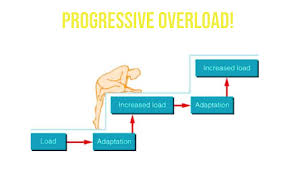
Progressive Overload
Progressive overload is the gradual increase in stress placed on the muscles during training. This is the cornerstone of muscle growth and strength gains, as your muscles need to be continually challenged to adapt and grow.
The Way You Train Directly Effects Muscle Growth: Work Harder, And Learn More!

Mechanical Overload
Mechanical overload refers to placing heavy, sustained tension on your muscles, usually through heavy resistance training. This causes the muscle fibers to be stressed to the point of damage, prompting the body to repair and strengthen them.
Volume And Frequency
Volume is the amount of sets and reps of a weight someone does in a week. Research shows that higher training volume (e.g., 10-20 sets per muscle group per week) is more effective for hypertrophy than lower volumes. This doesn’t mean fit all the sets into one session, training a muscle group 2-3 times per week has been found to be more effective for hypertrophy than just once a week. For example, instead of doing 15 sets of chest exercises on a single day, you could do 5 sets on three different days.
Why Does Volume Matter?
It’s important to understand how volume works when working out because it is a key fundamental to understand. The more volume the more recovery you’ll need, the more muscle you can gain. Its simple!

It’s essential to balance volume and frequency with recovery. More volume or frequency isn’t always better if you’re not allowing your muscles adequate time to recover and grow.
Rep Ranges for Certain Goals
The rep range you train in significantly impacts your outcome, whether it’s strength, hypertrophy, or muscular endurance.
Hypertrophy: 6-12 Reps
Optimal for Growth: The moderate rep range (6-12) is ideal for stimulating muscle hypertrophy. This range allows you to lift moderate weights for a sufficient number of reps to cause both mechanical tension and metabolic stress.
Strength: 1-5 Reps
Maximal Strength: If your primary goal is to increase strength, lower rep ranges (1-5) with heavier weights (85-100% of your one-rep max) are most effective. This rep range focuses on myofibrillar hypertrophy and neuromuscular adaptations, increasing strength without necessarily adding muscle size quickly.
Endurance: 12-20+ Reps
Muscle Endurance: For endurance, higher rep ranges (12-20+ reps) with lighter weights are most effective. This style of training doesn’t maximize hypertrophy but can increase your muscle’s ability to work under prolonged stress, beneficial for athletes or those looking to improve stamina.

Time Under Tension
Time under tension refers to the amount of time your muscles are actively working during a set. Increasing TUT can help with hypertrophy by prolonging the stress on the muscle
How TUT Stimulates Growth:
Slower Eccentric Phase: The eccentric phase of a lift (the lowering of the weight) is where most muscle damage occurs. By slowing down this phase, you can increase TUT and induce more hypertrophy.
Controlled Movements: Instead of focusing on lifting and lowering weights quickly, try to control both the concentric (lifting) and eccentric (lowering) portions of the movement.
Isometric Holds: Holding the weight at a certain point during the lift (e.g., pausing at the bottom of a squat) can increase the time your muscles are under tension and add another layer of intensity to your workout.
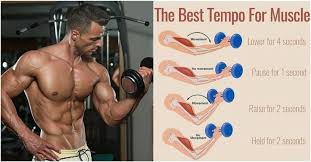
Mechanical Tension
Mechanical tension is the direct force exerted on your muscles during exercise. It occurs when muscles generate force to overcome a load, such as when lifting weights.
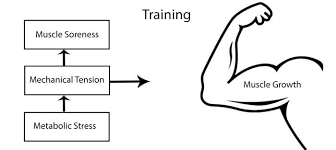
How to Maximize Mechanical Tension:
Heavy Resistance: Lifting heavy weights creates a high degree of tension, especially when your muscles are working close to their limit.
Full Range of Motion: Performing exercises through a full range of motion places the muscles under maximum tension. For example, going deep in a squat or fully extending your arms during a bicep curl engages the muscles more effectively.
Slow, Controlled Lifting: Slowing down your movements can increase mechanical tension by forcing your muscles to work harder at every phase of the lift.
Mechanical tension is one of the primary drivers of hypertrophy, as it stresses the muscle fibers and stimulates them to grow.
Muscle Damage
Muscle damage refers to the microtears in muscle fibers caused by intense exercise. These tears are a natural result of resistance training, and during recovery, the body repairs and strengthens the damaged fibers, leading to muscle growth.
How Muscle Damage Happens:
Eccentric Loading: The eccentric (lengthening) phase of an exercise, such as lowering the weight during a bench press, causes more muscle damage than the concentric phase (lifting the weight).
New or Unfamiliar Movements: Trying new exercises or using different angles or grips can lead to more muscle damage as your muscles are not yet adapted to the new stress.
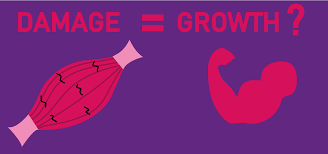
High-Volume Training: Training with high volume (multiple sets and reps) can also contribute to muscle damage, particularly if you push your muscles to fatigue.
While muscle damage is necessary for hypertrophy, it’s important to allow for proper recovery. Overtraining or not allowing enough time for muscles to repair can hinder growth.
Metabolic Stress
Metabolic stress occurs when muscles are worked to the point where they are deprived of oxygen, leading to the buildup of metabolic byproducts like lactate. This “pump” feeling during a workout is a sign of metabolic stress.
How Metabolic Stress Stimulates Hypertrophy:
Blood Flow Restriction: When your muscles are under stress, blood flow becomes restricted, and metabolic byproducts build up. This causes cellular swelling, a process that signals the body to increase muscle protein synthesis and growth.
High Reps, Short Rest: Training with higher repetitions (12-20) and shorter rest periods (30-60 seconds) can lead to greater metabolic stress. Techniques like supersets, drop sets, and rest-pause sets are also effective at increasing metabolic stress.
The Muscle Pump: The “pump” (increased blood flow to the muscles during exercise) is closely related to metabolic stress. While not the primary driver of hypertrophy, it does play a supporting role by signaling anabolic processes.
Metabolic stress triggers several growth factors that contribute to muscle hypertrophy, especially in conjunction with mechanical tension.
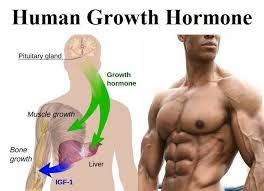
Growth Factor Release
When metabolic stress occurs, it leads to the release of anabolic (muscle-building) hormones and growth factors like growth hormone (GH), insulin-like growth factor (IGF-1), and testosterone. These hormones play a critical role in promoting muscle protein synthesis, increasing nutrient uptake by muscles, and accelerating muscle recovery. Higher levels of these hormones enhance the muscle-building process over time.
Metabolic stress can also lead to improvements in the muscles’ ability to generate energy. As your muscles adapt to the stress, they become more efficient at using energy sources, such as carbohydrates and fats, to fuel contractions. This adaptation can improve endurance and allow for more work to be done during a workout, leading to increased muscle fatigue and further growth stimulation.
Muscle fiber recruitment during resistance training is crucial for maximizing hypertrophy. Different muscle fiber types are recruited based on the intensity and volume of the exercise. High-intensity efforts primarily engage fast-twitch fibers, which are essential for strength and hypertrophy. Typically, slow-twitch fibers are recruited first, but as the load increases, fast-twitch fibers become increasingly involved, especially during maximal efforts.
Mitochondrial adaptations play a vital role in enhancing muscle endurance and performance. Regular endurance training leads to an increase in the number and size of mitochondria within muscle cells, enhancing the muscle's ability to produce energy. These adaptations improve aerobic capacity, allowing athletes to sustain higher intensity efforts for longer periods, which is essential for both endurance and strength training.
Enhanced muscle endurance is a key benefit of consistent strength training. Improved muscular endurance means muscles can perform repeated contractions over longer periods, crucial for both athletic performance and daily activities. Resistance training, particularly with higher repetitions and shorter rest periods, conditions muscles to handle fatigue better, thereby increasing overall endurance.
Nutrient-Induced Hypertrophy: Fueling Muscle Growth Through Healthy Eating
Nutrient-induced hypertrophy refers to the physiological adaptations that occur in response to adequate nutrient intake, supporting recovery, muscle repair, and overall growth. For bodybuilders, understanding how nutrition impacts hypertrophy is essential for achieving optimal results.
Hypertrophy is primarily influenced by resistance training, but nutrition plays a crucial role in maximizing muscle growth.
Why Macronutrients Are Important
Macronutrients—proteins, carbohydrates, and fats—are fundamental to muscle development and recovery. Here’s how each contributes to nutrient-induced hypertrophy:

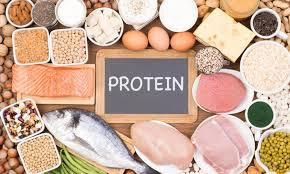

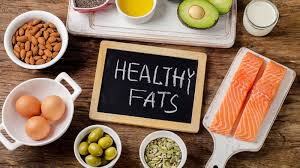
Protein
Muscle Repair and Growth: Protein is essential for muscle repair and growth, providing the building blocks (amino acids) necessary for synthesizing new muscle fibers. Consuming high-quality protein sources, such as lean meats, fish, eggs, dairy, and plant-based proteins, is crucial for maximizing muscle hypertrophy.
Timing and Distribution: To optimize muscle protein synthesis, aim to distribute protein intake evenly throughout the day, ideally consuming protein-rich meals every 3-4 hours. This approach can enhance recovery and promote greater muscle growth over time.
Carbs
Energy Source: Carbohydrates are the primary fuel source for intense workouts. Consuming adequate carbohydrates before and after training helps replenish glycogen stores, supporting performance and recovery.
Insulin Response: Carbohydrates stimulate insulin release, a hormone that plays a vital role in promoting nutrient uptake into muscle cells. This insulin response helps facilitate amino acid transport and storage, further enhancing muscle growth.
Healthy Fats
Hormonal Balance: Healthy fats are crucial for hormone production, including testosterone, which plays a key role in muscle growth. Incorporating sources of healthy fats, such as avocados, nuts, seeds, and olive oil, can support hormonal balance and overall health.
Caloric Density: Fats are more calorie-dense than carbohydrates and proteins, making them an efficient way to increase caloric intake, especially for bodybuilders looking to gain muscle mass.
What about micronutrients?
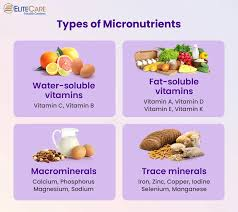
While macronutrients often take center stage, micronutrients (vitamins and minerals) are equally important in supporting optimal muscle function and recovery.
Vitamins are essential organic compounds that play a crucial role in energy metabolism, immune function, and muscle repair. Key vitamins for bodybuilders include Vitamin A (for immune health), B-Complex (for energy production), Vitamin C (for antioxidant protection), and Vitamin D (for calcium absorption and muscle function).
Minerals are inorganic substances that are vital for many physiological processes. Important minerals for bodybuilders include Calcium (for muscle contraction), Magnesium (for muscle relaxation and protein synthesis), Zinc (for recovery and immune support), and Iron (for oxygen transport in the blood).
Hydration: The Overlooked Nutrient
Hydration is often overlooked but plays a vital role in muscle function and recovery. Dehydration can impair performance, reduce strength, and hinder muscle growth. Aim to stay hydrated by:
Drinking Water: Ensure adequate water intake before, during, and after workouts to maintain optimal performance and recovery.
Electrolyte Balance: During intense training sessions or prolonged workouts, consider replenishing electrolytes through sports drinks or foods rich in potassium, sodium, and magnesium to support hydration and muscle function.

When working out you lose a lot of body fluids. It’s extremely important to make sure you replace all of your fluids by drinking clean water, with electrolytes. Many foods in our diets are full of water, making food a good way to hydrate as well.
Nutrient Timing for Optimal Results
Nutrient timing refers to the strategic consumption of nutrients—carbohydrates, proteins, and fats—around workout periods to maximize performance, recovery, and muscle growth. By understanding when to consume specific nutrients, bodybuilders and fitness enthusiasts can optimize their training results and improve overall athletic performance.
Pre-Workout
Pre-workout nutrition is vital for enhancing performance and preventing fatigue during training sessions.
Aim to eat complex carbs and protein, 30 minutes to 2 hours before your workout, depending on your digestion preferences. A larger meal can be consumed 2 hours prior, while a smaller snack can be ingested closer to your workout.
Post-Workout
Post-workout nutrition is critical for recovery and muscle growth. Consuming the right nutrients after exercise helps replenish glycogen stores and facilitates muscle repair.
Focus on healthy fats, protein and complex carbs
Consume these nutrients within 30 to 60 minutes after your workout to capitalize on the “anabolic window,” when your muscles are most receptive to nutrient uptake.
What Is Metabolism?
Metabolism refers to the complex set of life-sustaining chemical reactions that occur within the body to maintain life. These processes convert the food we eat into energy and are essential for everything from breathing, cell repair, and digestion, to physical activities such as exercise. Metabolism not only affects how your body uses calories but also plays a significant role in weight management, energy levels, and overall health. Metabolism can be divided into 2 categories:
Anabolism
This is the process through which your body synthesizes complex molecules from simpler ones. Anabolic processes typically require energy and are involved in the growth and repair of tissues. For example, building muscle tissue from amino acids is an anabolic process.
Catabolism
This involves breaking down complex molecules into simpler ones, releasing energy in the process. The digestion of food and the breakdown of glycogen into glucose for energy are examples of catabolic processes.
Together, these anabolic and catabolic reactions form the foundation of metabolism. They are constantly working to ensure your body has the energy it needs for daily activities and survival.
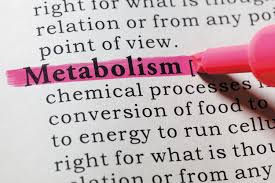
Metabolic Rate: How Fast Does Your Body Burn Energy?
The metabolic rate refers to the speed at which your body burns energy (calories) to sustain basic bodily functions, as well as during physical activity. This can be broken down into three main components:
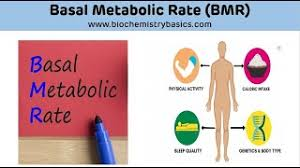
What Is Basal Metabolic Rate?
BMR accounts for the majority of your daily caloric expenditure—about 60% to 70%. It represents the energy your body uses to maintain essential functions like breathing, circulation, and cell production while at rest. Essentially, BMR is the number of calories you need just to survive, even if you did nothing but lie in bed all day.
Thermic Effect of Food (TEF)
This is the energy your body uses to digest, absorb, and metabolize the food you consume. It generally accounts for about 10% of your total caloric expenditure. Certain macronutrients, such as protein, require more energy to break down than fats or carbohydrates, which is why high-protein diets are often recommended for weight management.
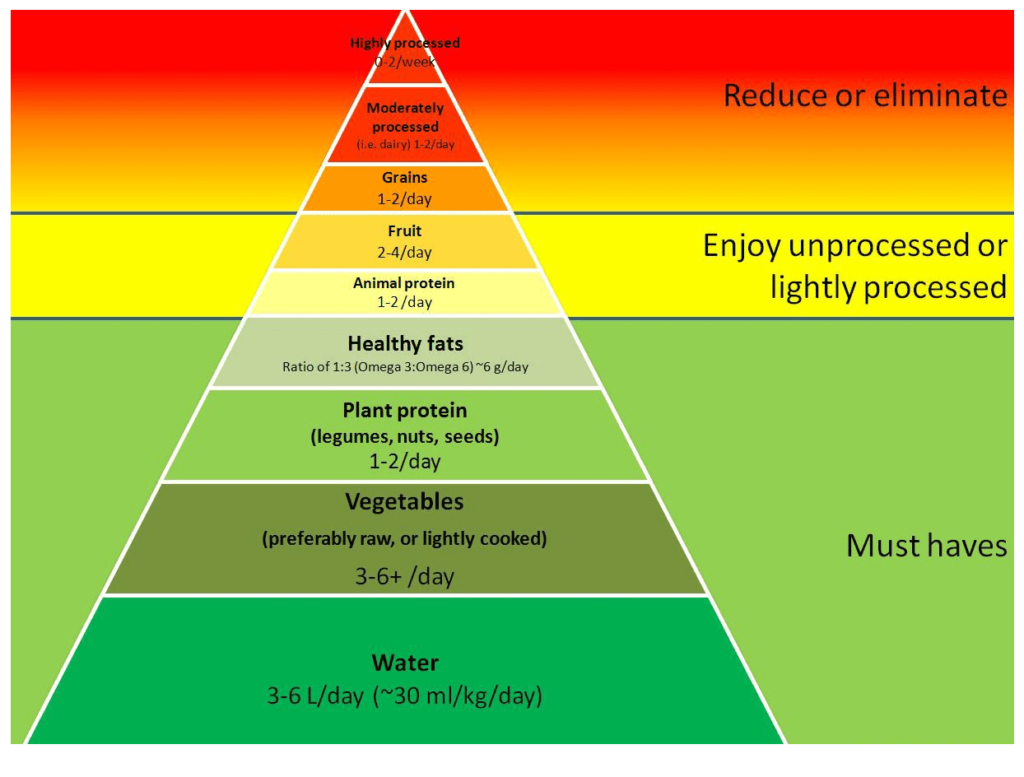

What Effect Does Exercise Have On Calories?
The energy you expend during physical activity makes up the remaining 20% to 30% of your daily caloric burn. This can vary greatly depending on how active you are. Exercise, as well as simple daily movements like walking or even fidgeting, fall under this category
Factors That Influence Your Metabolism
Age: Metabolism tends to slow down with age, particularly due to the loss of muscle mass and changes in hormone levels. After age 30, metabolic rate decreases by about 2-5% per decade.
Muscle Mass: Muscle burns more calories than fat, even at rest. Therefore, people with more muscle mass tend to have a higher metabolism. This is one reason why resistance training and strength exercises are effective for boosting metabolic rate.
Body Size: Larger individuals generally have higher metabolic rates because their bodies require more energy to sustain essential functions.
Gender: Men typically have a higher metabolic rate than women due to higher muscle mass and lower body fat percentages.
Hormones: Hormonal imbalances, such as those caused by thyroid disorders, can significantly impact metabolic rate. For example, hypothyroidism can slow down metabolism, while hyperthyroidism can speed it up.
Genetics: Your genes play a role in determining your metabolic rate. Some people naturally have faster or slower metabolisms due to their genetic makeup.
Diet and Nutrition: What you eat can influence your metabolism. Diets high in protein can increase the thermic effect of food (TEF), while extreme caloric restriction can lower your metabolic rate as your body adapts to conserve energy.
Sleep: Poor sleep patterns can negatively impact metabolism by disrupting hormonal balance, particularly those hormones that regulate hunger and fat storage, such as leptin and ghrelin.
Boosting Your Metabolism
Increase Physical Activity
Regular exercise, especially resistance training, is one of the best ways to boost your metabolism. Strength training builds muscle, which increases your resting metabolic rate. High-intensity interval training (HIIT) is another effective way to elevate your metabolism long after your workout ends.
Eat Enough Protein
Protein requires more energy to digest than carbohydrates or fats, which increases your thermic effect of food (TEF). Additionally, consuming sufficient protein helps maintain muscle mass, which is key for a healthy metabolism.
Stay Hydrated
Drinking water has been shown to temporarily boost metabolic rate, especially if the water is cold. Proper hydration is also essential for all metabolic processes to function optimally.
Eat Small, Frequent Meals
Eating smaller, more frequent meals throughout the day can help prevent large spikes and dips in blood sugar, which can keep your energy levels steady and maintain metabolic efficiency.
Get Adequate Sleep
Sleep is crucial for maintaining a healthy metabolism. Chronic sleep deprivation can lead to hormonal imbalances that negatively affect hunger, fat storage, and metabolic rate. Aim for 7-9 hours of quality sleep each night.
Manage Stress
Chronic stress can increase levels of the hormone cortisol, which can slow down your metabolism and lead to weight gain, especially around the abdominal area. Incorporating stress-relieving activities such as meditation, yoga, or deep breathing exercises can help manage cortisol levels.
High Intensity Interval Training (HIIT)
- HIIT involves alternating between extreme intensity and lower intensity exercises.
- HIIT is often recognized as the most efficient way to burn calories and lose weight, because it boosts your metabolic rate for hours after exercise.
- The high intensity intervals should be performed with maximum effort possible, pushing your limits.
- The lower intensity interval usually only last slightly longer than the higher intense one.
- A HIIT exercise usually lasts between 5-10 cycles
- HIIT exercises provide superior cardiovascular and metabolic benefits
- Start slow and gradually increase the intensity, or else you’ll burn out quickly.
- Consistency is important, because you do get more efficient at every exercise you do with consistency.
Why Does It Even Matter?
You may be asking yourself “Why so many big words?” or “How do these words even help me?“
Well you get to learning about it and it might just change the way you think about exercise, the food you put in your body, or even get you interested in the topic like me.
They say working out isn’t for everyone. Well I got news for the lazy… It is. When you go weeks to months without any physical activity your body begins to adjust and slow down accordingly. When this happens you can feel depressed, fatigued, or you may just gain body fat. Don’t be alarmed by the excess amount of fat on your stomach, because it’s just some extra fuel your body’s been storing onto for special occasions.
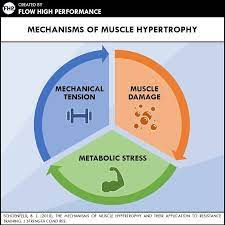
When you are working out you are supposed to have a goal. Whether that’s to lose weight, gain muscle, get better at a sport, jump higher or whatever that may be the goal is set and it is reasonable. The things I teach will be applicable to all of them. It changes your mentality when you fundamentally figure something out, because you know you’re doing it RIGHT. Now I’m not here to tell you that you have to workout a specific way, or be so consistent with progress you get lost with everything else in your life. I’m strictly just trying to help people get a deeper understanding on how their body actually works and what causes the muscle building process that way people aren’t going in working hard and doing it wrong and end up getting hurt.
Take walking for example. Everybody without a disability can walk. The heavier load you carry on your body (your weight) while walking means more your body has to work harder automatically increasing the amount of muscle you have, and increasing the amount of weight you are used to carrying.

The Muscle
So what is a muscle? A muscle is a tissue in the body that contracts to produce movement. muscles are made up of long thin cells called muscle fibers. Muscle fibers contain smaller units called myofibrils. Myofibrils are made up of sarcomeres that break down into myosin and actin. when a muscle contracts it is because the myosin attaches to the actin and pull them inward. Actin acts as the binding protein for myosin to attach to in order to create force.
Muscle fibers
Muscle fibers are the individual cells that makeup the muscle. When you lift weights or engage in resistance training you are working your muscle fibers. When doing so micro tears and trauma occurs in the muscle fiber. This kicks on the recovery process where the muscles start requiring different sources of nutrition and rest in order to recover stronger. When working out it is important to know what kind of muscle fibers are working and why you’re training those as opposed to the other kinds. For example the different types of muscle fibers are slow and fast twitch muscle fibers.
Types of muscle fibers
Most muscles possess multiple of each fiber type. The dominant fiber type in a muscle is determined by the main function of the muscle. People tend to vary in proportion of fast twitch to slow twitch fibers, ranging from 15% slow twitch in great sprinters, and 90% in great marathon runners. This is also determined by genetics. Some people will just naturally have more fast twitch fibers and some people with more slow twitch fibers. They all have their own strengths, weaknesses and training techniques as well.
Fast oxidative twitch muscle fibers
Fast oxidative fibers have relatively fast contractions and produce more force than slow twitch fibers, but also fatigue much faster. These are oxidative and produce ATP aerobically.
Fast glycolytic twitch muscle fibers
Fast glycolytic fibers have fast contractions and primarily use anaerobic glycolysis. They produce the most force but also fatigue the quickest of all.
Slow oxidative twitch muscle fibers
Slow oxidative fibers are able to function for a longer period of time before fatigue, but contract slower. These are oxidative which means they produce ATP aerobically. Slow twitch fibers are better for marathons, bodybuilding, stabilization, and balance.
Recovery: The Key to Maximizing Muscle Growth and Performance
Recovery is often overlooked but is a crucial component of any successful training program. Whether you’re a seasoned bodybuilder, an athlete, or someone new to working out, proper recovery plays a pivotal role in muscle growth, injury prevention, and overall performance enhancement. In this section, we’ll delve into why recovery matters, the science behind it, and how you can implement effective recovery strategies into your routine.
Why Recovery Matters
During intense workouts, especially in strength training and bodybuilding, your muscles undergo stress, which leads to microscopic tears in the muscle fibers. While this process is essential for muscle growth, the actual rebuilding and strengthening occur during rest periods. Without adequate recovery, you risk overtraining, decreased performance, and increased susceptibility to injuries.
In short, recovery is the time when your body repairs itself, replenishes energy stores, and strengthens muscles to adapt to the training load. Proper recovery optimizes:
Muscle Hypertrophy: Muscle repair and growth happen during rest, not during the workout itself.
Performance: Athletes who recover well can train harder and more frequently.
Injury Prevention: Giving your muscles time to recover reduces the risk of overuse injuries and burnout.
Mental Health: Mental recovery is just as important. Taking breaks can reduce stress and improve focus for future workouts.
Recovery Strategies for Optimal Results

Prioritize Sleep
Sleep is the most important element of recovery. While you’re asleep, the body releases growth hormones and undergoes major tissue repair. Aim for 7-9 hours of quality sleep each night to ensure optimal recovery.

Nutrition: Fuel for Recovery
Proper nutrition is vital for muscle repair and growth. After a workout, your body is in a state of depletion and needs essential nutrients to begin the recovery process.

Hydration
Dehydration slows down the recovery process, leading to fatigue and decreased performance. Drink plenty of water throughout the day, and consider electrolyte replenishment if you’re engaging in long or intense workouts.

Active Recovery
Active recovery involves low-intensity exercises that promote blood circulation and help alleviate muscle soreness without putting further stress on the body.
While pushing your limits in training can yield significant progress, overtraining can quickly become counterproductive. Overtraining occurs when there’s insufficient recovery between workouts, leading to chronic fatigue, mental burnout, and increased injury risk.

Massage and Therapy
Massage therapy can accelerate muscle recovery by increasing blood flow to targeted areas, reducing muscle stiffness, and promoting relaxation
Getting a leaner body mass
If you want to have muscle and still not be big, you need to lower your body fat percentage. In order to lower your body fat % it is recommended exercise multiple times a week, including cardiovascular training. Drinking plenty of water is important in order to fill the muscles, proper electrolyte consumption is important as well. Aim for around 0.9g of protein per pound of bodyweight, and exclude drinking carbohydrates. Eating meat is extremely beneficial when it comes to making progress quick. Meat is full of the protein and fats your body needs to feel energized throughout the day. Last of all be consistent and very patient. Progress doesn’t come overnight. It takes weeks of dedication and constant challenging yourself in order to make quick progress and even when trying your hardest it wont come quick or easy. You may plateau often, but using isometrics, focusing on progressive overload, and tracking your progress it makes it much easier to always make progress.
Facts and Myths About Hypertrophy
Nutrition Myths
Myth: You need to eat every 2 hours to build muscle.
Fact: While frequent meals can support muscle growth, the timing of protein intake is more important than meal frequency.
Myth: Carbs hinder muscle growth.
Fact: Carbs are essential for energy and muscle glycogen replenishment.
Myth: Protein shakes are the only way to build muscle.
Fact: Whole food protein sources like chicken, beef, fish, eggs, and dairy are equally effective.
Myth: You need supplements to build muscle.
Fact: A balanced diet is usually sufficient. Supplements can be beneficial, but they’re not essential.
Myth: Eating more protein will automatically build more muscle.
Fact: Protein is essential, but it needs to be paired with resistance training for optimal muscle growth.
Myth: Bulk up first, cut later.
Fact: Combining muscle building and fat loss can be effective for many people.
Myth: Calories don’t matter for muscle growth.
Fact: A caloric surplus is generally needed for muscle growth, but excessive calories can lead to fat gain.
Training Myths
Myth: You need to lift heavy weights to build muscle.
Fact: While heavy lifting is effective, lighter weights with higher repetitions can also stimulate muscle growth.
Myth: More reps equal more muscle growth.
Fact: Rep ranges should vary to target different muscle fibers.
Myth: Isometric exercises are ineffective for muscle growth.
Fact: Isometrics can contribute to strength and muscle development.
Myth: Soreness is a sign of muscle growth.
Fact: Soreness (DOMS) is a normal response to new training stimuli, but it’s not directly correlated with muscle growth.
Myth: You need to train every muscle group every day.
Fact: Muscles need time to recover and grow.
Myth: Cardio hinders muscle growth.
Fact: Moderate cardio can complement muscle building efforts.
Myth: Spot reduction is possible.
Fact: You can’t target fat loss in specific areas.
Myth: Muscle turns into fat when you stop training.
Fact: Muscle and fat are different tissues.

